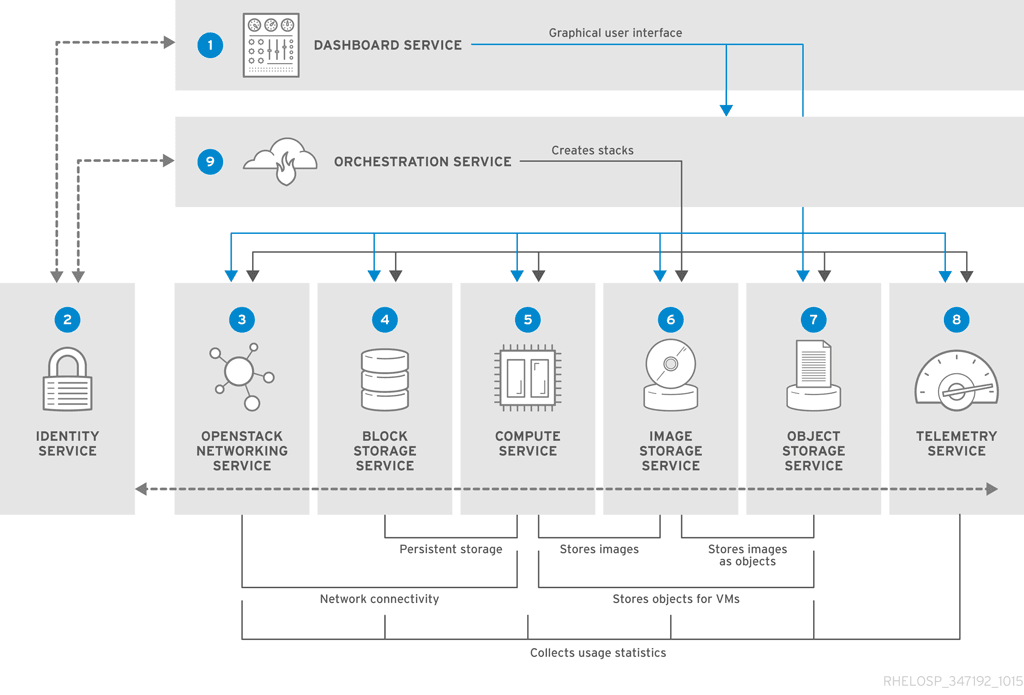Introduction
OpenStack is the world’s most widely adopted open source cloud platform, known for its flexibility, scalability, and powerful customization capabilities. Its modular architecture allows organizations to maintain complete control over their infrastructure and the services they provide. However, a successful OpenStack implementation requires thorough preparation and an understanding of numerous technical and operational challenges.
In this article, we will explore the most important factors to consider when implementing OpenStack, the common mistakes organizations make, and how to avoid them — to help you build a stable, secure, and scalable cloud platform from day one.
Starting with the Right Knowledge, Team, and Budget
OpenStack consists of several individual services that support different functionalities: from Nova (for managing virtual machines), Cinder (for storage), Neutron (for networking), to Horizon (the web interface). This modularity offers great flexibility, but also adds technical complexity — especially when all services must be integrated into a cohesive and functional system.
That is why it is essential to have a clear budget from the outset, a properly trained team, and a realistic assessment of required competencies. Many organizations choose to engage external support in the form of OpenStack consulting teams or rely on managed services to speed up the implementation and reduce technical risk.
Standardization and Interoperability
Open source solutions often come with challenges related to standardization. Incompatibilities between different OpenStack versions, as well as issues when integrating with existing infrastructure and software, can lead to complications and additional costs.
One way to overcome these challenges is by working with a cloud provider that offers a supported and tested OpenStack distribution, and by using cloud management tools that simplify administration and increase interoperability between services and components. If you have your own development team, you can actively contribute to building the features you need.
Scalability from Day One
OpenStack is designed for scalability, but scaling is not just a matter of adding resources. For the system to grow without downtime and performance issues, a strong infrastructure foundation and careful planning during the design phase are necessary.
A scalable OpenStack infrastructure requires clearly defined goals, planning for redundancy, zoned deployments, and high availability design. It’s also advisable to integrate monitoring and capacity measurement tools, which enable proactive responses and future resource planning. Working with a hosting provider that offers on-demand scaling capabilities will further simplify this process.
Security as the Foundation of a Stable Environment
OpenStack’s open architecture and numerous APIs introduce potential security risks. Weak authentication, poor password policies, and misconfigured components can easily lead to serious vulnerabilities.
It is critical to implement “Zero Trust” security principles — assign minimum privileges to each service and user, encrypt data in transit and at rest, and log and monitor all activities using threat detection systems. Regular patching and staying up-to-date with official OpenStack security announcements should be a standard part of daily operations.
Documentation and Operational Maintainability
Thorough documentation is often underestimated but is a key part of a successful implementation. Without clear technical documentation, every future upgrade, integration, or troubleshooting process becomes more difficult and risk-prone.
Documentation should be created from the planning stage onward, including system topology details, configuration settings, automation scripts (e.g., Ansible playbooks), and access control policies. In addition to simplifying ongoing operations, this also enables better training and team transparency.
How to Properly Design and Size an OpenStack Platform
One of the most critical phases of OpenStack implementation is the initial infrastructure planning — also referred to as the sizing and design phase. Mistakes made at this early stage can lead to performance issues, unnecessary costs, and poor scalability later on.
Here are several key steps for a proper approach:
1. Define Workloads and Use Cases
Clearly identify the types of workloads the platform will run: whether they are web applications, CI/CD systems, AI/ML models, databases, or microservices. Each has different requirements in terms of CPU, memory, networking, and storage.
2. Estimate Resources Based on Capacity and Growth
Based on the expected number of instances, users, traffic, and data volumes, determine the required resources. Plan for horizontal scaling (number of nodes), as well as vertical elasticity (resources per node). Always include a buffer for growth over the next 12–24 months.
3. Architectural Design
Define the number and types of nodes: control, compute, network, and storage nodes. Design for high availability (HA) using load balancers, multiple control nodes, and storage replication.
4. Plan Network Topology
OpenStack networking (Neutron) can be complex — plan clearly separated network layers (management, storage, tenant) with appropriate bandwidth and security policies.
5. Security from Day One
Include user network isolation, TLS encryption for API access, authentication via Keystone, and centralized logging for monitoring and forensic auditing as part of your design.
6. Choose Monitoring and Automation Tools
Integrate monitoring and alerting tools from day one (e.g., Prometheus, Grafana, ELK stack), and implement automation using tools like Ansible, Terraform, or Heat templates to simplify management and scaling.
In-House Deployment or Managed Service?
Organizations with complex IT infrastructures, a need for high levels of control, and internal expertise in open source technologies may choose to implement and maintain OpenStack internally. On the other hand, companies with smaller teams, limited resources, and a focus on stability and quick implementation often opt for managed OpenStack solutions.
In either case, it is crucial to choose a model that aligns with your goals, internal capabilities, and long-term IT infrastructure strategy.
Conclusion
OpenStack provides a powerful and flexible foundation for building modern cloud infrastructure — whether used for development, testing, or production environments. Its modularity and open source nature offer complete control and extensive customization, but also demand careful planning and the right technical skill set.
To avoid common pitfalls — such as interoperability issues, limited scalability, security vulnerabilities, or inefficient operations — it is necessary to make informed decisions from the start and invest in proper platform design.



